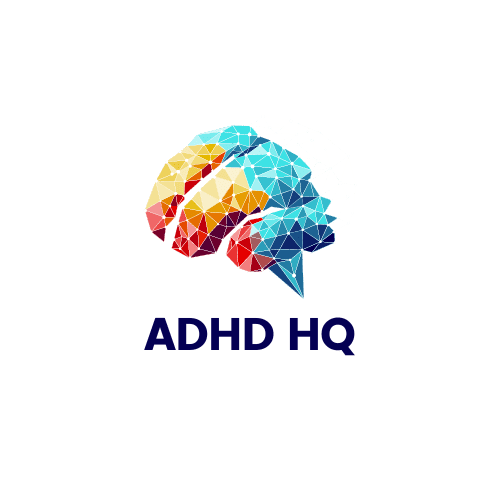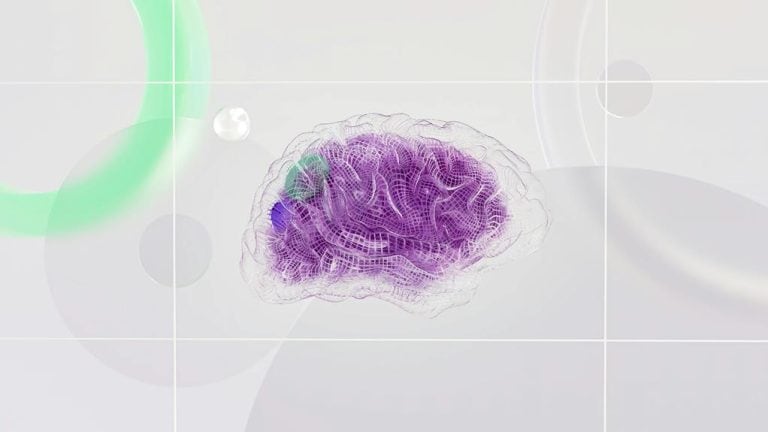Calming Activities for Adhd
Oh, the joy of finding ways to soothe the whirlwind that is ADHD. From calming exercises to sensory-rich activities, the possibilities are endless.
But what if I told you there's a hidden gem in the world of calming techniques, one that combines creativity and mindfulness in a unique way?
The answer lies in a practice that not only calms the mind but also nurtures the soul.
Curious to reveal this powerful method?
Key Takeaways
- Mindfulness and breathing techniques aid in emotional regulation and stress reduction for individuals with ADHD.
- Engaging in creative outlets and sensory activities promotes calmness and emotional well-being.
- Physical exercises and nature-based strategies help manage energy levels and enhance focus in ADHD individuals.
- Aromatherapy and technology-free relaxation ideas offer valuable tools for managing ADHD symptoms and promoting mindfulness.
Mindfulness Practices for ADHD

Engaging in mindfulness practices can significantly benefit individuals with ADHD by enhancing emotional regulation and reducing symptoms of stress and impulsivity. Mindfulness exercises such as deep breathing, body scan meditation, and mindful walking can be valuable coping strategies for managing ADHD symptoms. By focusing on the present moment, individuals with ADHD can improve their ability to regulate emotions and maintain better control over impulsive behaviors.
Research has shown that mindfulness activities are effective in reducing stress, anxiety, and impulsivity in individuals with ADHD. These practices help children with ADHD enhance their attention span, decrease emotional reactivity, and improve self-control. For instance, guided imagery and progressive muscle relaxation are mindfulness interventions that have been found to enhance self-regulation and reduce hyperactivity in kids with ADHD.
Regular practice of mindfulness can lead to better emotional awareness, increased self-regulation, and improved overall well-being for individuals with ADHD. By incorporating these techniques into daily routines, individuals can experience a sense of calmness and better manage the challenges associated with ADHD.
Creative Outlets for Calmness

Utilizing creative outlets such as drawing, painting, or crafting can offer children with ADHD a therapeutic path towards relaxation and calmness. Engaging in artistic activities provides a unique opportunity for self-expression and emotional regulation. Through these creative pursuits, children can release pent-up emotions, reducing stress levels and promoting a sense of calm.
The act of creating art stimulates the brain's creative centers, leading to improved focus, attention, and overall well-being in children with ADHD. By encouraging children to explore different mediums of artistic expression, caregivers can provide them with a valuable therapeutic outlet for managing their emotions and finding inner peace.
Artistic activities not only serve as a form of stress reduction but also as a means of enhancing emotional well-being and fostering a sense of tranquility. To conclude, incorporating creative outlets into a child's routine can significantly contribute to their emotional regulation, stress reduction, focus improvement, and overall sense of calm.
Physical Exercises to Regulate Energy

How can physical exercises effectively help regulate energy levels in children with ADHD?
Physical activity plays an important role in managing energy regulation for children with ADHD. Activities like running, biking, or walking not only provide a healthy outlet for excess energy but also help improve focus and reduce restlessness.
Engaging in proprioceptive activities such as climbing or hanging can offer sensory input that aids in regulating energy levels. By tailoring physical exercises to meet individual needs, hyperactivity in children with ADHD can be effectively managed.
Challenging tasks that require both physical and mental effort can help channel energy in a positive way, promoting better regulation. Regular participation in physical activities not only boosts mood but also enhances overall well-being in children with ADHD.
Breathing Techniques for Relaxation

When it comes to managing ADHD, incorporating breathing techniques can be incredibly beneficial.
Deep breathing not only helps to calm the mind but also aids in reducing stress levels.
Deep Breathing Benefits
Engaging in deep breathing exercises can greatly benefit individuals with ADHD by promoting relaxation and reducing stress levels. Deep breathing helps activate the body's relaxation response, reducing stress and anxiety levels. It calms the amygdala, the brain's fear center, promoting emotional regulation.
Additionally, deep breathing improves oxygen flow, enhancing focus and cognitive function. Research shows deep breathing can lower heart rate and blood pressure, aiding in relaxation. Practicing deep breathing regularly can improve overall well-being and mental clarity.
Mindful Breath Awareness
Focusing on mindful breath awareness can be a powerful tool for promoting relaxation and reducing stress in individuals with ADHD. By incorporating deep breathing techniques into daily routines, it's possible to activate the body's relaxation response and calm the nervous system effectively.
These practices, such as belly breathing or the 4-7-8 technique, can aid in emotional regulation and enhance cognitive function. Mindful breathing serves as a convenient and accessible strategy that can be utilized at any time or place, making it a valuable tool for managing ADHD symptoms.
Research indicates that the practice of mindful breathing techniques can lead to significant improvements in emotional regulation and cognitive function for individuals with ADHD.
Relax With Breath
To achieve a state of relaxation, incorporating deep breathing techniques can be highly beneficial. When feeling overwhelmed, practicing breathing exercises can activate the body's relaxation response and calm the nervous system.
Here are some techniques to help you relax:
- Belly Breathing: Inhale deeply through your nose, allowing your belly to expand, then exhale slowly through your mouth. This technique helps bring focus to your breath and promotes relaxation.
- Counting Breaths: Counting your breaths can assist in regulating your breathing patterns, bringing a sense of calmness and mindfulness to your mind.
- 4-7-8 Breathing****: Inhale for 4 seconds, hold for 7 seconds, and exhale for 8 seconds. This technique can induce relaxation and reduce stress levels effectively.
Sensory Activities for Focus

When it comes to enhancing focus in individuals with ADHD, incorporating sensory activities can be incredibly beneficial.
Engaging in activities like finger painting, playdough, or using sensory tools such as fidget spinners can help improve attention and regulate emotions.
Fidget Toys Benefits
Fidget toys, known for their sensory benefits, play an essential role in helping children with ADHD enhance focus and manage their emotions effectively. These toys provide sensory stimulation, aiding in self-regulation and concentration. Here are three key benefits of fidget toys for children with ADHD:
- Improved Attention Span: Fidget toys can help reduce distractions, allowing children to stay focused for longer periods.
- Stress Reduction: The tactile feedback from fidget toys can lower stress levels, promoting a sense of calmness and relaxation.
- Enhanced Concentration: By keeping hands busy, fidget toys can enhance concentration during tasks, leading to increased productivity.
Integrating fidget toys into daily routines can be an invaluable tool in supporting children with ADHD in their learning and development.
Aromatherapy for Focus
Focusing on creating a calming sensory environment through aromatherapy, individuals with ADHD can harness the benefits of essential oils like lavender and chamomile to improve concentration and productivity.
The use of aromatherapy for focus involves incorporating these calming scents into daily routines to reduce stress and promote a sense of calmness, which is particularly helpful for those with ADHD.
Whether through diffusers, direct inhalation, or applying oils to pulse points, the soothing properties of essential oils can aid in enhancing cognitive function and increasing attention span.
Research supports the idea that creating a calming environment with aromatherapy can help individuals with ADHD stay focused and improve their productivity in various tasks, making it a valuable tool in managing symptoms.
Mindful Breathing Techniques
Utilizing mindful breathing techniques can greatly enhance focus and reduce stress levels in children with ADHD. When a child practices calming breathing exercises, they engage in a process that promotes emotional regulation and improves attention span.
Here are three effective breathing techniques for children with ADHD:
- Belly Breathing: This technique involves taking deep breaths, allowing the belly to rise and fall with each inhale and exhale.
- 4-7-8 Breathing: With this method, the child breathes in for 4 seconds, holds the breath for 7 seconds, and exhales for 8 seconds, promoting relaxation and focus.
- Box Breathing: In this technique, the child breathes in slowly for 4 seconds, holds for 4 seconds, exhales for 4 seconds, and pauses for 4 seconds before repeating.
Nature-Based Calming Strategies

Spending time immersed in nature offers children with ADHD a natural and effective way to reduce stress and anxiety levels. Nature-based calming strategies, such as hiking, gardening, or simply playing outdoors, can greatly contribute to promoting relaxation and enhancing emotional well-being in children with ADHD. The contact with natural elements like grass or trees has a soothing effect on their minds, helping them connect with their senses and regulate their emotions more effectively.
Incorporating nature into the daily routines of children with ADHD can play an essential role in reducing hyperactivity and fostering a sense of calmness. By engaging in outdoor activities, they not only benefit from the physical exercise but also from the therapeutic properties of nature. Whether it's feeling the grass under their feet or listening to the sounds of birds chirping, these experiences can provide a much-needed escape from the pressures of everyday life, offering a safe space for relaxation and reflection.
Technology-Free Relaxation Ideas

Immersing oneself in simple yet effective relaxation techniques can provide children with ADHD a technology-free way to find calm and peace amidst the daily challenges they face. These activities not only offer a break from screens but also promote mindfulness practices, outdoor activities, sensory activities, creative pursuits, and physical exercises. Here are some ideas to help children with ADHD relax without technology:
- Mindfulness Practices: Engage in meditation, guided imagery, or grounding exercises to help manage stress and anxiety effectively.
- Outdoor Activities: Take a walk in nature, tend to a garden, or play with pets to enjoy relaxation and stress relief in the natural environment.
- Sensory Activities: Practice deep breathing and progressive muscle relaxation to calm ADHD symptoms and promote relaxation without the need for technology.
Frequently Asked Questions
What Can I Do to Calm My Adhd?
When my ADHD feels overwhelming, I turn to mindful breathing, nature walks, coloring therapy, yoga poses, and sensory fidgets. These activities help me find peace, focus, and balance in a world that can feel chaotic.
How Do You Calm Restless Mind Adhd?
To calm my restless mind in ADHD, I practice mindful breathing, take nature walks, enjoy coloring therapy, attend yoga sessions, and engage in creative writing. These activities help me focus, relax, and manage my symptoms effectively.
What Are Relaxation Exercises for Adhd?
When seeking calmness with ADHD, I find mindful breathing instantly grounding. Progressive muscle relaxation helps release tension. Guided imagery encourages mental escape. Yoga poses foster body-mind connection. Nature walks connect me with serenity.
How Do You Calm Down an ADHD Meltdown?
To calm down during an ADHD meltdown, I rely on deep breathing and mindfulness practices. Engaging in sensory distractions and grounding exercises helps me manage stress. Movement breaks, creative outlets, nature walks, and meditation are essential self-care strategies.
Conclusion
To sum up, incorporating calming activities into daily routines can greatly benefit individuals with ADHD. Did you know that studies have shown that engaging in mindfulness practices can decrease symptoms of ADHD by up to 30%?
By exploring different techniques such as mindfulness, creative outlets, physical exercises, and nature-based strategies, individuals can better manage their symptoms and improve overall well-being. Remember, finding what works best for you is key in finding peace and balance.







